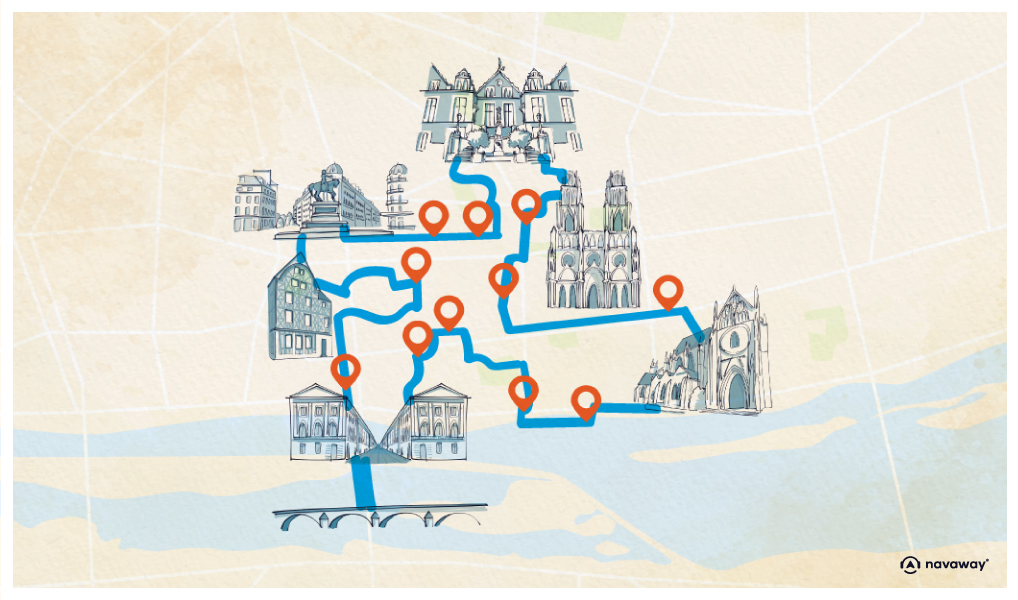
Sainte-Croix Cathedral

This point of interest is available as audio on the tour: Visit Orleans, Walking through history with Clovis, Joan of Arc and Attila
Now that you’ve seen it from every angle, let’s take a moment to talk about the remarkable Sainte-Croix Cathedral. The story begins all the way back in the 4th century, at the dawn of Christianity in Orléans. Back then, the first church on this site was said to house a fragment of Christ’s cross — which is why it’s still called Sainte-Croix, or “Holy Cross,” to this day. That original building stood for centuries before being destroyed in a massive fire in 989, which devastated much of the city. In its place, a Romanesque cathedral was built and served the community for about 200 years… until it collapsed in 1277. This time, they decided to go big — inspired by the soaring Gothic style that was sweeping across Europe. They looked to Amiens Cathedral for inspiration and launched an ambitious, large-scale project. But progress was anything but smooth. Construction slowed — understandably — during a rather eventful 15th century, which saw the Hundred Years’ War, the Black Death, and the Siege of Orléans. Still, work continued, and the cathedral was finally completed in the second half of the 16th century. Unfortunately, peace didn’t last long. Next came the Wars of Religion. In 1567, when Protestants took control of the city, a radical group of Huguenots, angry at their leader’s attempts to reconcile with Catholics, planted explosives that brought down the four pillars supporting the transept crossing — along with the central spire. And just like that, the newly finished cathedral lay in ruins after only 30 years! After the Edict of Nantes in 1598, France entered a period of peace, and King Henry IV — known for his, let’s say, flexible approach to religion — decided to fund a major reconstruction. In 1601, he and Marie de Medici laid the first stone of the new structure, which you can still see today! If you look closely around the tympanum, you’ll spot several decorative elements added to honor the monarchy, including a crown, a scepter, and the hand of justice. The long saga didn’t end there — the French Revolution brought more upheaval — and the cathedral wasn’t officially inaugurated until 1829. That ceremony took place on May 8th, to mark the 400th anniversary of Joan of Arc’s liberation of the city. All in all, it took six centuries — and a fair bit of chaos — to create what you see today: one of the five largest Gothic cathedrals in France. But here’s something truly unique: unlike every other cathedral in the country — and possibly in the world — Sainte-Croix was never consecrated by a member of the clergy. Normally, a church is officially made sacred through a ceremony called the Dedication. Legend has it that during the original blessing, Saint Euverte, the bishop of Orléans, saw a hand emerge from a cloud to bless the church from above. Stunned, he stopped the ceremony mid-way, saying he couldn’t bless a place that God himself had already consecrated. So, to this day, the cathedral has never been officially consecrated. If you head toward the apse and look up at the keystone — the very highest point in the cathedral — you’ll see a painted hand emerging from a cloud, a lasting reminder of that extraordinary legend.


Discover Orleans with app
An interactive guide through the most beautiful streets, squares, and districts
23 fun audioguides full of historical facts, anecdotes, and legends





Comments